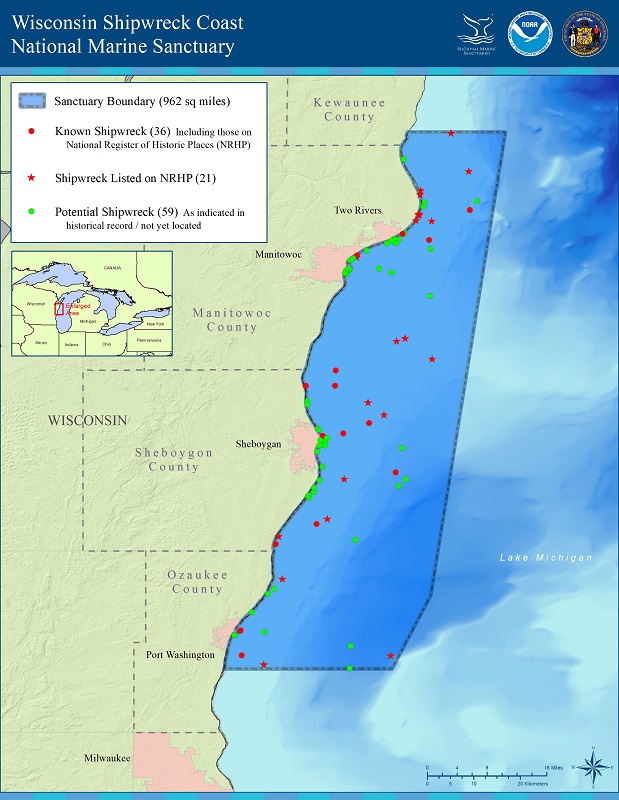Lake Michigan is the second-largest of the five Great Lakes of North America. Spanning over an area of 22,406 square miles, this large body of water holds an estimate of 1,500 shipwrecks, sprawled across its sandy bottom. Many of these wrecks date back to the 1800s and thanks to the lake’s cold, pristine water, they are essentially intact. Even small items like cutlery and ornaments remain in their original position, unharmed.
Wisconsin’s Great Lakes shipwrecks are often described as time capsules, and while the cold freshwater has done a great job preserving these underwater treasures so far, additional measures to protect these fragile archaeological sites are always welcome.
After more than six years of effort, NOAA published a final environmental impact statement and final management plan for the proposed Wisconsin Shipwreck Coast National Marine Sanctuary. As of June 2021, 962 square miles of Lake Michigan have become protected waters.

“We’re really excited about NOAA’s announcement,” said Wisconsin Governor Tony Evers. “The designation builds on 30 years of maritime heritage preservation by the State of Wisconsin and will create exciting new opportunities in education, recreation, and tourism in our coastal communities.”
Shipwrecks in the area include schooners, barges, tugs, scows, canallers, wood and steel propellers, a brig, and a dredge. Some carried raw material east while others headed west loaded with coal and manufactured goods. Historical shipwrecks within the sanctuary borders include the two oldest shipwrecks discovered in Wisconsin – Gallinipper (1833) and Home (1843), both largely intact.
The newly designated shipwreck sanctuary, and NOAA’s 15th marine sanctuary, will protect 36 shipwrecks, 21 of which are on the National Register of Historic Places. Furthermore, research suggests the area may include up to 60 additional wrecks that have yet to be discovered.
The sanctuary status carries restrictions like the prohibition of boats anchoring on shipwrecks in the sanctuary. NOAA officials believe the designation will open doors for research and educational opportunities for the generations to come. But above all, it will provide a means to promote heritage tourism and recreation, especially among scuba divers.
